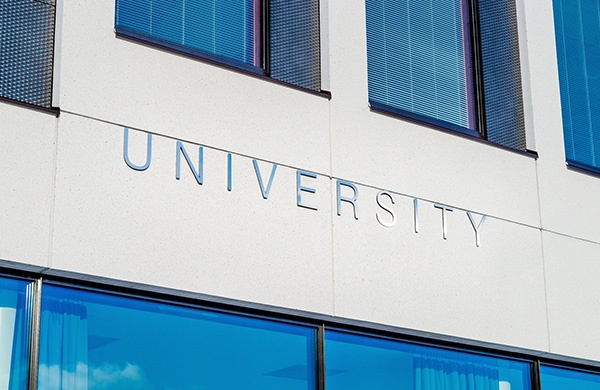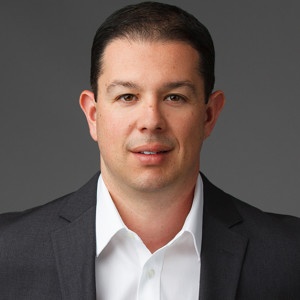By Dedee DeLongpre-Johnston | University of Florida
An educational institution goes green with the help of strong leadership, green building design, facilities management, and, most importantly, cooperation.
We've all read the news of companies going green and making green. The headlines make a compelling case for a CEO to take the plunge. Institutions of higher education are making similar commitments to greening their campuses and the moves are paying big dividends.
Beyond the headlines, we don't often read about the people behind the scenes, those who translate visions into actions. Engineers are retooling manufacturing systems. Operational managers are redesigning processes. Human resource officers are rethinking the structure and function of teams.
Financial managers are reconfiguring systems of measurement and evaluation. All of this change is dramatically increasing the efficiency and effectiveness of institutional operations. And it is challenging work. Institutions of higher education are "greening" their campuses and the moves are paying big dividends.
At the University of Florida, like several other institutions of higher education, an Office of Sustainability is in place to help facilitate the change. The university's president champions the effort and thousands of students support the move. Facilitation of this shift on a 2,000-acre campus with 52,000 students and 4,000 staff is understandably complex. It is grounded in the confluence of broad-based grassroots support and a commitment from high-level decision-makers. But full institutional alignment, particularly among mid-level managers-deans, directors, and department heads-remains the critical, and often missing, element in the success of a sustainable shift.
In an attempt to bring key players into the effort, staff members from the university's Office of Sustainability often refer to it as the "Office of Common Sense." The goal is to identify a common sense of the best way forward for the university, the students, the community, and the planet. Before mid-level managers participate fully in the change, they must be able to see its relevance to their departmental goals and budgets. Likewise, their contributions must be evaluated against institutional benchmarks and individual strategies.
Staff members, who are already engaged in the effort, continue to pick all of the low-hanging fruit along the path. They switch out light bulbs across campus, gaining energy efficiency along the way. They divert 35 to 40 percent of solid waste from landfills annually through reuse and recycling efforts. They process all the campus waste water, releasing the treated water for irrigation. They design all new construction to LEED Silver certification standards.
Upward of 30 % of the food served in dining facilities is sourced from regional growers. All of these efforts support the university president's commitment to campus carbon neutrality by 2025.
The University of Florida enjoyed a great deal of success on this first leg of its journey toward sustainability due to the strength of internal human assets: strong leadership in campus planning, green building design, and facilities management.
Institutional leaders considering a "green" vision should take an inventory of the internal assets on hand and conduct a type of readiness assessment. When the initial successes have been captured and celebrated, everything on the horizon seems much more complex.A systems approach, emphasizing the interconnections and inter-reliance between and within operations, is critical.
The University of Florida is a large, decentralized institution, with individual units operating like discrete businesses. Specialization in these individual units leads to redundancy in operations across campus. This same specialization can also serve as a barrier to individuals and departments in understanding their role in the larger system. A systems approach, emphasizing the interconnections and inter-reliance between and within operations, is critical. Otherwise, the structure itself will serve as a barrier to units embracing institution-wide goals.
The shift to sustainability is as much about the process as the destination. 60 percent of the shift toward institutional sustainability and the reduction of the university's carbon footprint can be achieved behind the scenes, through operational efficiencies. The other 40 percent must derive from human commitment to change. The university's Office of Sustainability conducted a six- month survey, asking for input on the direction of sustainable campus planning. More than one hundred participants met over fourteen sessions to create a portrait of possibilities for the future.
Internal marketing, within a community-based social marketing framework, is one of the keys to success. In order to communicate effectively with the members of the campus community, facilitators have to understand what is important to community members, what motivates them, and what holds them back from participating in the changes envisioned for campus.
Big, hairy, audacious goals, or BHAGs, as Collins and Porras call them, must be set within an organizational climate that fosters creativity and innovation. The best ideas and solutions for reaching these goals will come from those engaged in the heart of operations. These employees, and students in the case of the university, must be empowered to bring forward creative ideas. Not all will be implemented, but all must be considered. After all, nothing is tried and true in the shift to sustainability.
The State of Florida is facing an economic downturn. Budget cuts create feelings of uncertainty about the future and unease among employees. This community discomfort can hinder collaboration. In this climate, members of the campus community are challenged to see themselves as part of a greater whole. Instead, they build walls to shield themselves from change. The challenge lies in portraying the shift to sustainability as a community-wide goal, the success of which will strengthen the whole community.
Conclusion
In the implementation of this vision, operational staff and managers must feel empowered to bring about systemic change. Students' enthusiasm to think innovatively about their place in a rapidly changing world must be nurtured. All members of the campus community must feel inspired to embrace the vision of a sustainable campus as their own. The countless hours invested in the implementation of this vision of a new common sense will pay dividends for all stakeholders, today and for many generations to come.
About PE Facility Solutions
PE Facility Solutions, LLC, now under the brand Pristine Environments, manages, maintains and optimizes the performance of mission critical facilities for corporate real estate owners in nearly 100 million square feet of specialized buildings throughout North America. With a broad range of experience across an array of industries, including life sciences/cleanrooms, aerospace, datacenters, oil & gas, luxury retail, sports technology & fitness, and commercial real estate, our organization of over 1,000 professionals keeps our customers’ buildings and facilities operating efficiently, sustainably and on budget



